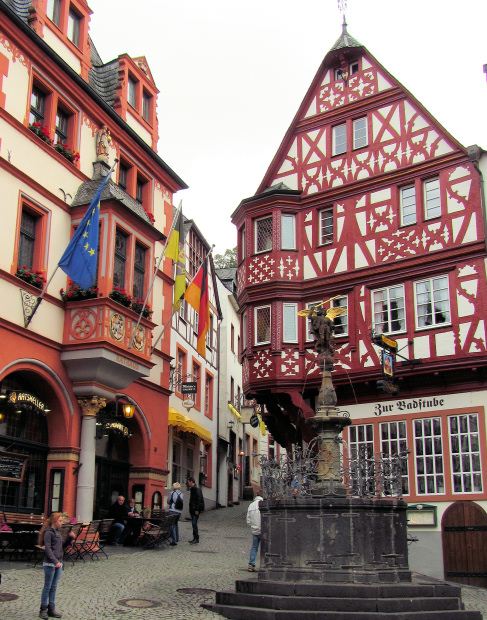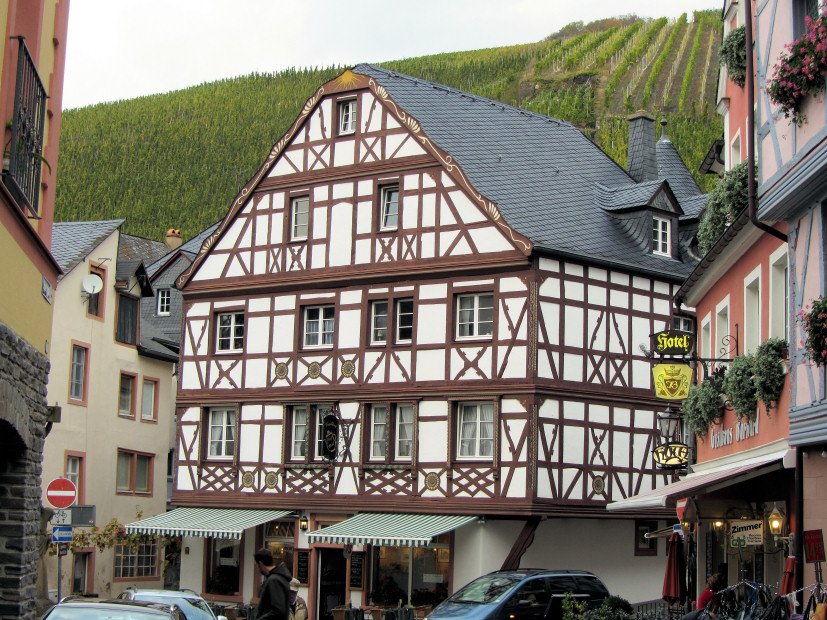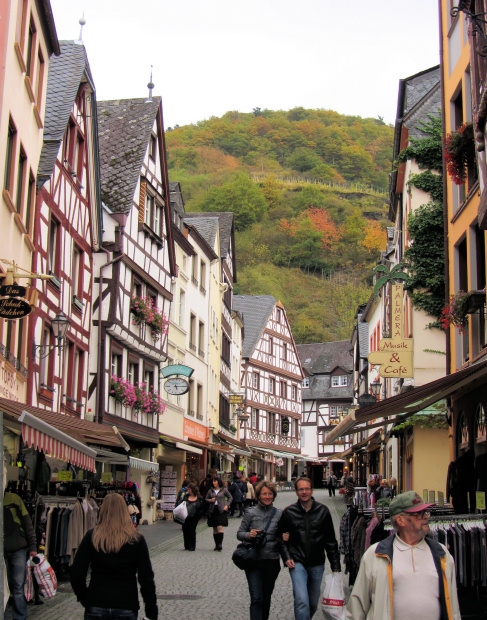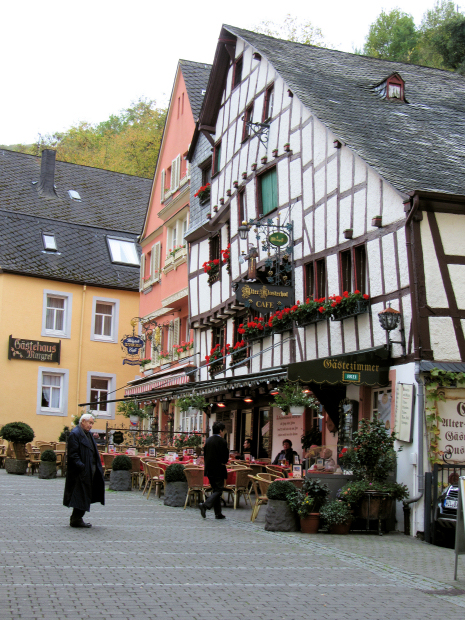
On a foggy evening this week, Joe and I visited Bernkastel-Kues on the Mosel River, and I took the above photo of the St. Michaelsbrunnen, or St. Michael’s Fountain, in the middle of the old town square. How old is this town square? Let’s just say that it was the height of fashion in 1608, when the pretty town hall on the left was built. The fountain is a couple of years older.

Bernkastel-Kues is a marriage of two old towns, Bernkastel and Kues, which stood on opposite sides of the river. There was no bridge between them until the 1870s. Grapevines like the ones in the photo above have been growing here since Roman days, when the poet Ausonius wrote that “from the topmost ridge to the foot of the slope the river-side is thickly planted with green vines.” So the town is full of wine shops and cafes offering wine by the glass.

Bernkastel-Kues boasts many fine examples of half-timbered construction, or what the Germans call Fachwerk: a load-bearing framework of shaped logs filled in by some other material, such as brickwork or plaster. Many of the half-timbered buildings in Bernkastel-Kues date from the 1500s and 1600s. As beautiful as they are, they don’t land Bernkastel-Kues on the Deutsche Fachwerkstraße, or the German Half-Timbered Road, a tourist route that connects some of the most beautiful half-timbered towns in the country.
Germany boasts some 2.5 million half-timbered buildings, and I’m sure they’re all perfectly safe. I’m going to assume that buildings which have lasted for hundreds of years aren’t ready to fall down anytime soon, no matter how scary some of them may look.

To see my latest blog posts, please click on the “Green and Pleasant Land” logo at the top of this webpage. Photos taken in October, 2011, in Bernkastel-Kues, Germany. Text and photos copyright Clare B. Dunkle, except for the excerpt from Ausonius’ “Mosella” translated by Hugh G. Evelyn White in 1919, which is in the public domain.
